Archive for 2009
Beastmen Conscripts
Posted by chicagoterrainfactory in 40K, miniatures on September 17, 2009
Ever have a project that seemed like a good idea at the time? I built a unit of 20 Beastmen for Imperial Guard using the lower half of the WFB Ungor with the Cadian torso & arms. Now that I look back on the unit – I must have been crazy. For those of you who don’t play Fantasy Battle, Ungors come 6 to a box with 8 Gors. Meaning I’d have to buy 3 boxes (and steal 2 more bodies from somewhere) in order to just get the beastman parts, the Cadian parts would take 2 more boxes.
But they are pretty sweet looking!
Celts/Iberians: WIP and Reading List
Posted by chicagoterrainfactory in painting, WAB on September 9, 2009
Starting to get this dip thing figured out. The key was diluting the stain with mineral spirits to get a shaded effect without coating more than 50% of the model. The current mix is 1 part stain to 2 parts spirits. In the photo – the back rank was dipped at full strength & the front rank was dipped using the diluted mix. I’ll need to come back at a later date & clean up the excess shade. Probably re-paint the shields also as the grain from the dip is very noticeable on the flat surface.
The second photo displays the simple paint job under the dip. Its so nice to be able to work through a unit of 10 in only two nights. With my current time constraints – the dip make for a marvelous alternative to the grey legion.
For game play in WAB, these Numidians are going to fill in for just about every spearmen in the ancient world. Ultimately, I think they will fit well as a Iberian tribe in Barcid employ.
Reading List
Barbarians Against Rome: Rome’s Celtic, Germanic, Spanish and Gallic Enemies by Peter Wilcox and Rafael Trevino. Published by Osprey.
Gallic chapter plates contain excellent painting references. Illustrations are an obvious resource for the Wargame Factory Celts.
Spanish chapter plates display a variety of Iberian tribes. Most warriors carry the scutum shield of Celtic origin (long and oval), or the caetra – a small round buckler. The Lusitan tribe is depicted as carrying a large round shield with boss. Tunic is sleeveless and earth tone.
The Celtic World by Cunliffe, Barry W.
Contains photo of WF Celtic ornamental shield.
The Ancient City: Life in Classical Athens & Rome by Peter Connolly and Hazel Dodge. A focus on Athens and Rome – how the cities operated, how common & noble people lived, how buildings were designed and created.
Beastman Battle Standard Bearer
Posted by chicagoterrainfactory in miniatures, WFB on August 31, 2009
Converting my 6th ed Beast of Chaos army into a 7th ed army lead me to adding a Battle Standard Bearer. Wanting something quick and inexpensive, I converted a Chaos Warrior body with Beastman arms, legs and head. Most of the work was done with side clippers & exacto – with the warrior cape covering up most of the damage to the knees. A small ball of putty supports the head, together with a few strokes of the sculpting tool to blend in the new neck. All told, I may have spent more time digging in my bitz box for parts than working on the figure.
Testors Dull Coat
Posted by chicagoterrainfactory in miniatures, painting on August 17, 2009
Absolutely amazed by Testors Dull Coat, I’ve never had a spray sealer so completely kill the shine on figures before. The units I’m currently working on are dipped in wood stain, which leaves a heavy duty shine on the model. One coat of Testors returned the figures to a perfect dull finish (almost too perfect – a little bit of shine can help hide painting imperfections).
Picked up my can at the local Michael’s Arts and Crafts for about $4.50.
The Only Good Space Wolf…
Posted by chicagoterrainfactory in 40K, miniatures, Terrain on August 3, 2009
is a dead Space Wolf.
No need to go into the vile details, but I have no love of the Space Wolves. Here’s hoping for a good nerfing in their new codex.
The terrain piece is Armor Cast based on plastic card with a few Mordheim bits.
GWpertinent: Old School Mini
Posted by chicagoterrainfactory in 40K, miniatures, web sites on July 30, 2009
GWpertinet is holding a old school 40K mini “contest”, looking for the oldest, painted GW figure in people’s collection. This kicked off a trip to Stuff of Legends to see what I had in my collection. I started playing in 1997, but most of my old school minis have been picked up second hand. My oldest figures come from the Eldar command unit from the March 1988 catalog – including the harpist, Champion and both standard bearers. I even have the back packs for the standards – I always figured they belonged to the harpist, not the meta gunner!
However – the contest calls for painted figure. Once again, I was surprised to find the Space Marine Commander ranks with the oldest and dates to the 1991 catalog. The figure was painted in 1998 or 1999 and was probably amongst the first 50 figures I painted. Good to see I’ve learned something in the past 10 years – like how to high light and to always under coat metal with black.
Speaking of history. In my collection, I found 3 beaky marines with 1987 stamped on the tab. In only 4 years GW managed to jump from the bent over, scrawny proto Space Marine to the commander pictured above. While the over all style has change a bit over the years, this commander shares more similarities with Marines of 2009 than 1987. I don’t know if that’s a sign of a strong design or stagnation…..
Carthage Army WIP
Posted by chicagoterrainfactory in painting, WAB on July 21, 2009
Plastic figures are a wonder to work with, but they sure take a lot of time to assemble. After a lot of work, my 1000 point Hannibal in Italy WAB army is assembled. All figures are Wargames Factory kits.
Army List:
- Gallic Cavalry
- Spanish Heavy Cavalry
- Trained Africans *
- Gallic Infantry
- Gallic Infantry
- Skirmishers
- Army Commander (not pictured)
*The Numidian spearmen kit will stand in for Trained Africans until I can purchase mailed spearmen. Once replaced, the figures will be used as Spanish Infantry. Yes, yes the figures have round shields. More on the shields later.
Reading List: Classical World
Posted by chicagoterrainfactory in WAB on July 10, 2009
Book Reviews
Warfare in the Ancient World edited by General Sir John Hackett – the text provides an over view of various periods in ancient history including Assyrians, Hoplites warfare, Persians, Alexander the Great, the Successors and about 5 chapters on Romans. Each chapter is 20-30 pages long and written by a different author. The book provides a good introduction to a periods arms and methods of warfare, has adaquate battle diagrams but does not contain any painting references.
Fighting Techniques of the Ancient World by Simon Anglim, Phyllix Jestice, Rob Rice, Scott Rusch and John Serrati. An overview of the fighting men of ancient times. The book is organized by type (infantry, cavalry, command and control, siege and naval) rather than by region. Sadly, the book reuses prints by Peter Connolly for most its illustrations – only the battle maps are original.
Greece and Rome at War by Peter Connolly. The book is a re-working of three earlier titles now out of print.
- Hannibal and the Enemies of Rome
- The Roman Army
- The Greek Armies
A massive work overflowing with Peter’s color illustrations of ancient troops- Greeks, Macedonians, early Italians, Celts, Spanish, Numidian and lots of Romans. Most of the illustrations are reproduced, although a number of the panoramic war scenes are missing. In addition to troops, the book also contains prints of fortifications and sea vessels. Out of all the books I’ve reviewed from the library, this one goes on my buy list
Online Research
Ligurian Warriors in the Hannibal WAB list caught my eye for the combination of javelins (mixed weapons) and light infantry. Information on the tribe seems sparse, but it may be possible to rep the unit using Celt figures.
Per Wikipedia Liguria is a northern region of Italy. The tribes of Liguria mostly allied with the forces of Carthage. Photo source Wilipedia, used without permission.
No ancient texts speak of Ligurians in southern Gaul as nations or attribute definite racial characteristics to them. Such authors as Strabo and Diodorus Siculus described them as a rough and strong people whose piracy the Romans deplored. These views, however, appear in late texts and refer to the Celticized Ligurians (Celtoligures) between the Rhône and Arno rivers. Strabo declared that they were a different race from the Gauls or Celts, and Diodorus mentioned that they lived in villages and made a difficult living from the rocky, mountainous soil. In any event, their reputed boldness caused them to be in great demand as mercenaries. They served the Carthaginian commander Hamilcar in 480bc and the Sicilian Greek colonies in the time of Agathocles and openly sided with Carthage in the Second Punic War (218–201 bc).
Carthage Army List & Figures
Posted by chicagoterrainfactory in miniatures, WAB on June 16, 2009
Carthaginian Army list: 2nd Punic war, Italy
Subordinate General with light armor and shield 88pts
Trained African #24 full command, 255 pts
Gallic Infantry #24 full command, 159 pts
Gallic Infantry #24 full command, 159 pts
Skirmishers #10, Musician, 45 pts
Gallic Cav #6 full command, 129 pts
Spanish Hv Cav #6 with light armor, full command, 165 pts
1000 pts
The army list is roughly based on Hannibal’s army, 2-4 years into the Italian campaign. Gallic Infantry makes up the majority of the infantry units, with Spanish and African units completing the formed units. Cavalry is a mix of Gauls, Spanish and Numidians. Units missing in the 1000 point list will be added at the 2000 level.
For this first phase, all figures are from Wargames Factory. My first order included not only the Celtic horse and Numidian I ordered, but bonus sprues of Roman Cav, Zulus and Ancient Germans! Multi-part plastic might be a bit more work to assemble, but they open the door for easy conversion. I like the Roman mail bodies with Numidian heads and shields as Spanish Cav. The standard Numidian spearman is servicable, but I’m concerned that the spear is too short. The Zulu with a Numidian head was an attempt at an additional skirmisher – but the smaller head looks funny on the well muscled body.
I’m interested in feed back from people on the following configurations.
- Trained Africans = Numidians with spear and shield
- Gallic Infantry = Celts
- Skirmishers = Numidians with javelins
- Gallic cav = Celtic cav
- Spanish Hv Cav = Roman cav armored bodies with Numidian armored heads and shields
Zulu with Numidian head, Ancient German x2, Celt, Numidian Spearman, Numidian Skirmisher
Birch Tree Leaf Litter
Posted by chicagoterrainfactory in Terrain on June 14, 2009
Turns out a popular type of leaf ground cover is nothing more than filler in the birch tree seed pod. An article on the Reaper forums provides a summary of how to preserve and color the leaves. I was fortunate enough to find a cluster of these birch trees in a local park (apparently they are quite rare in the Chicago region). The time to harvest the seed pods is now; one week ago the pods were green on the branch, today the pods are dry and releasing on the wind – one good storm and the season will be over. To look for these trees in your area, look for the paper like bark on the trunk.
First efforts with the leaf litter return so-so results. The “leaves” are a bit big for scale & a little difficult to paint. Excuse the bright green, I need to find a better color for the next project. This example was painted after application – perhaps next time I’ll follow the recommendations on the Reaper forums and pre-color the leaves.







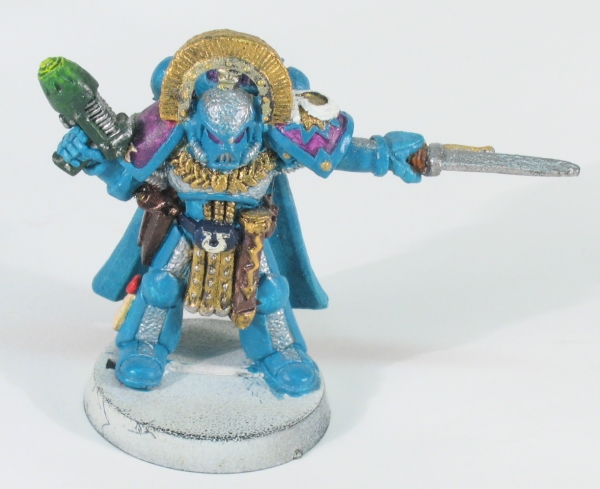
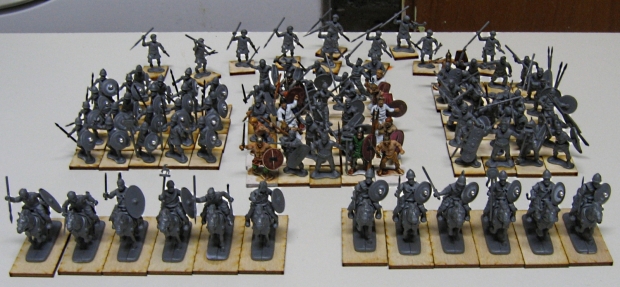

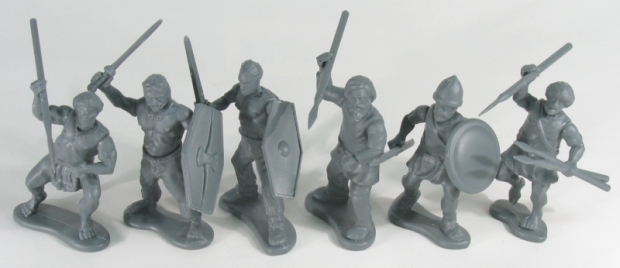

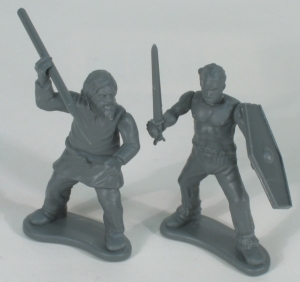


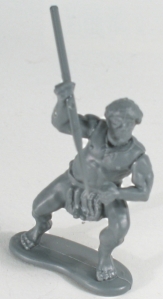

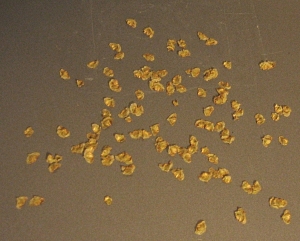

Comments